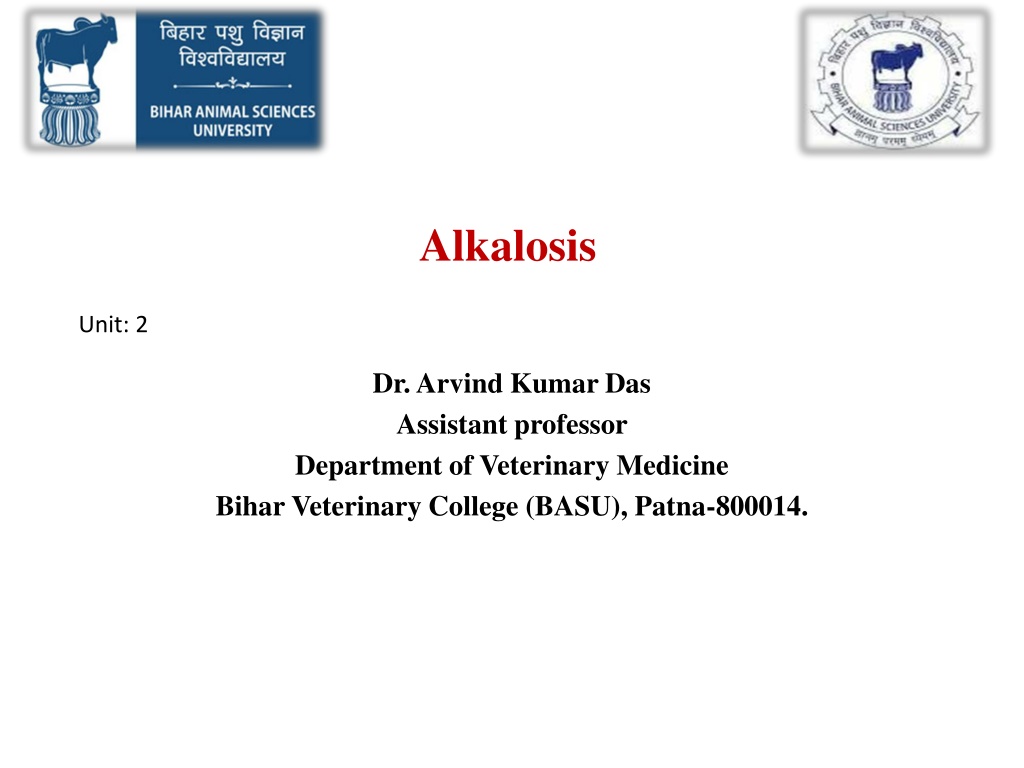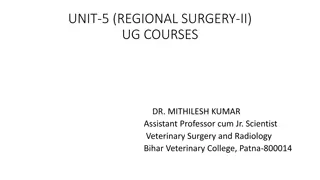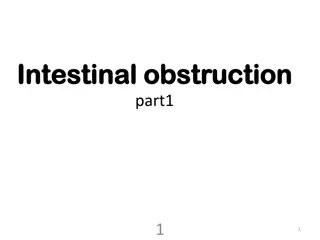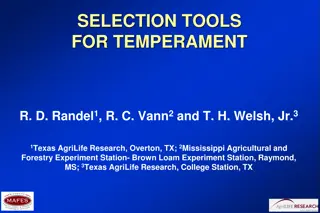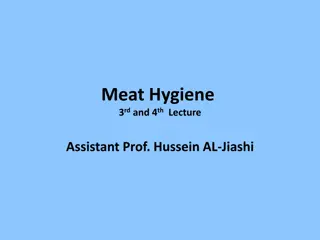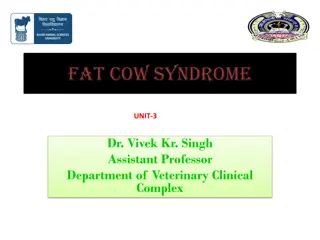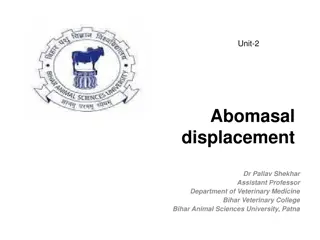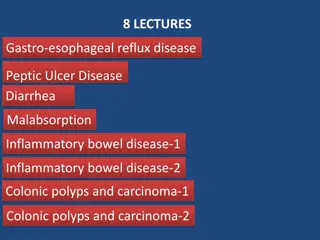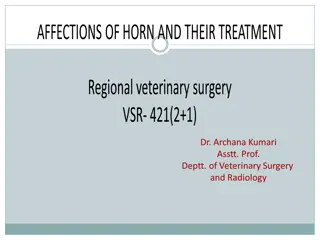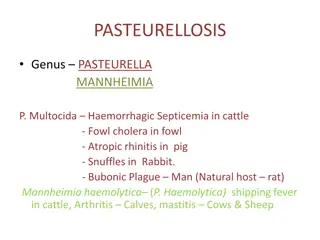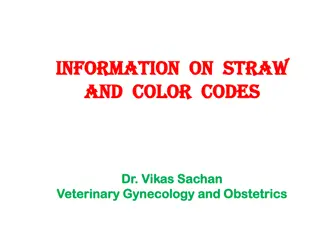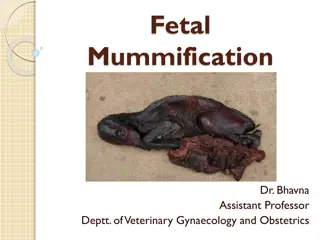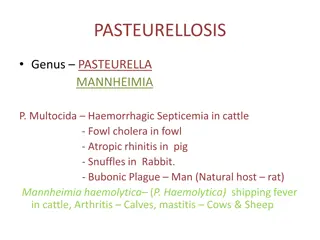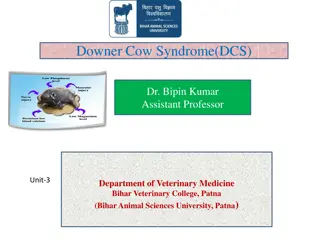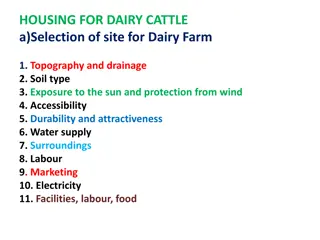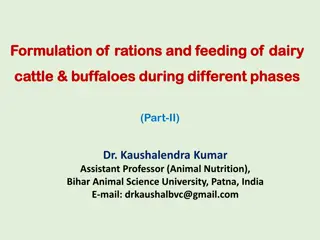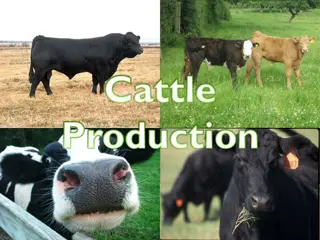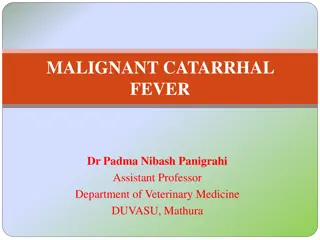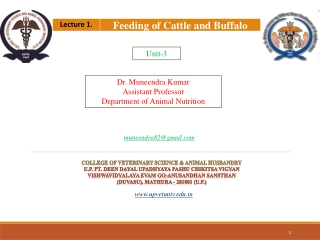Understanding Alkalosis in Cattle: Causes and Pathophysiology
Alkalosis in cattle, particularly ruminal alkalosis, can be caused by issues such as abomasal atony and alkaline indigestion. Excessive intake of protein-rich feed and changes in diet play a significant role. Pathophysiology involves the accumulation of ruminal ammonia, leading to alkaline pH and rumen muscle dysfunction. Proper management of diet and digestion is crucial to prevent and address alkalosis in cattle.
Download Presentation

Please find below an Image/Link to download the presentation.
The content on the website is provided AS IS for your information and personal use only. It may not be sold, licensed, or shared on other websites without obtaining consent from the author. Download presentation by click this link. If you encounter any issues during the download, it is possible that the publisher has removed the file from their server.
E N D
Presentation Transcript
Alkalosis Unit: 2 Dr. Arvind Kumar Das Assistant professor Department of Veterinary Medicine Bihar Veterinary College (BASU), Patna-800014.
Introduction Acidosis and alkalosis refer to the pathophysiologic process that cause net accumulation of acid or alkali (base) in the body Acidemia and alkalemia refer specifically to the pH of the blood Indigestion resulting from change in pH of ruminal fluid exceeding 7.5 is referred to as alkaline indigestion or ruminal alkalosis. Alkalosis is caused by an increased absorption of alkali, excessive loss of acid or a deficit of carbon dioxide. All clinical case of alkaline indigestion had history of ingestion of large amount of protein rich and low carbohydrate diet.
Causes of Alkalosis Abomasal atony due to dilatation, impaction or torsion of the abomasum is one of the commonest causes of alkalemia (alkalosis) in cattle. There is continuous secretion of hydrochloric acid and potassium into the abomasum, with failure of evacuation of the abomasal contents into the duodenum for absorption. Sequestration of hydrochloric acid and potassium occurs in the abomasum, along with reflux into the rumen, all of which results in a hypochloremic, hypokalemic alkalosis.
Causes of Alkalosis Alkaline indigestion occurs usually due to Excess and sudden intake of protein rich feed, Urea feeding, Abrupt change of ration, Drinking of contaminated and sewage water and Excessive feeding of straw over a prolonged period of time. Most of the times Soyabean meal is commonly fed to dairy cows and growing cattle due to its high energy and nitrogen content leading to alkalosis.
Pathophysiology Excess feeding of protein In rumen excess production of ammonia The microbes cannot utilize. Non-utilized ammonia for microbial synthesis, absorbed beyond the GIT. The increased level of ruminal ammonia increased rate of absorption The excess ammonia reaches the portal circulation, Transported to liver converted to urea. Urea excreted via kidney through urine Or recycled into the rumen by way of saliva Or through blood Excessive accumulation of ruminal ammonia, nitrogen
Pathophysiology Decrease in VFA Alkaline pH of ruminal fluid Inhibit ruminal contractions Cause paresis of rumen musculature
Pathophysiology The range of pH in alkaline indigestion remains between 7.5 to 9.5 When pH exceeds to 7.5, there is decrease in the number of ruminal microflora Rumen fluid appears watery and dark brown in colour It may become slimy and having putrid odour The paresis of rumen musculature High ruminal fluid pH bring about inappetence and interfere with cellulose digestion
Clinical Signs The principal signs of alkaline indigestion include Anorexia, Moderate decrease in milk yield, Depression, Increased pulse and respiratory rate, Constipation & semi-solid or pasty faeces, Hepatic, renal, circulatory and nervous disturbances Ruminal fluid colour changed to khaki brouwn Ruminal fluid consistency changed to watery Decreased ruminal protozoan activity
Clinical Signs Dry muzzle Tachycardia Tachypnoea Dehydration Ruminal atony Grinding of teeth Salivation Twitching of ears and facial muscles Significant increase of Hb and PCV Leucocytosis Hypoglycemia Increased BUN Lower Protein, albumin and globulin Low serum Ca and P level
Clinical Signs As compared to other forms of indigestion, very less information is available on alkaline indigestion in cattle Alkalosis results in slow, shallow respirations in an attempt to preserve carbon dioxide. Muscular tremors and tetany with tonic and clonic convulsions may occur because of depression of the ionized fraction of serum calcium. Hyperpnea and dyspnea may also occur in the terminal stages.
Treatment Primary cause should be treated Use of different ruminal acidifier for the treatment of alkaline indigestion in cattle. 5 % Acetic acid in 250 ml water orally once a day can be used 0.9% NS for chloride responsive metabolic alkalosis @ 50 100ml/hrs until urinary cloride rises to > 25 mEq/L (> 25 mmol/L) and urinary pH normalizes. Underlying conditions are treated with the correction of hypovolemia and hypokalemia. For urgent correction of blood pH by hemofiltration or hemodialysis is an option.
